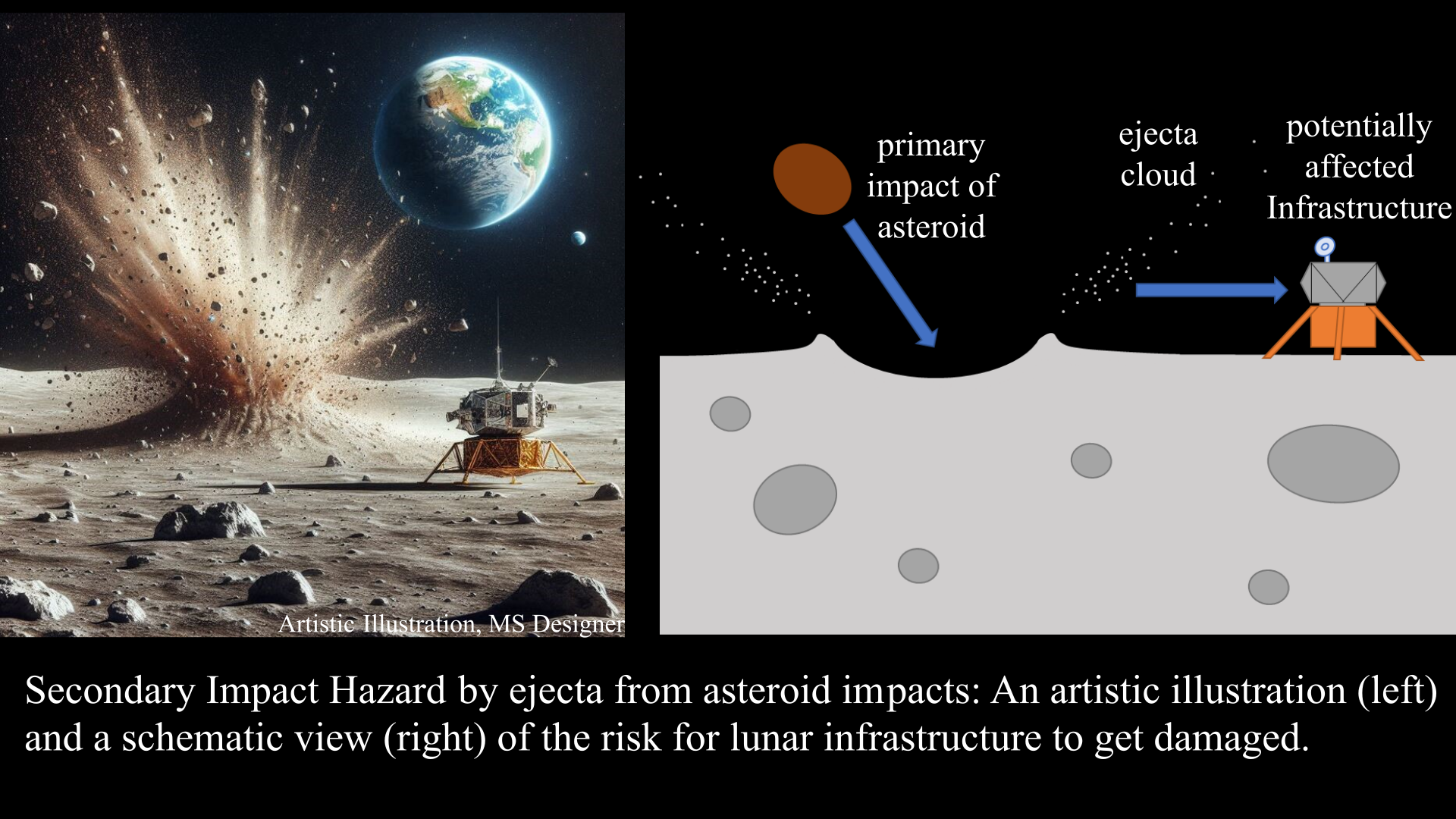Duration: 12 months
Asteroid impacts of various scales pose a threat to human infrastructure on the Moon because there is no protective atmosphere. Observations of fresh craters and impact flashes on the Moon proof that impacts are not just hypothetical events on a short time scale. It is well known that direct impacts pose a significant threat, but the swarm of their ejected material also possess large energy with the potential to damage infrastructures. The affected area by ejecta is much larger than the area that is hit by the primary impact. There are two risk domains that we identify: (1) larger masses of slower ejecta carry sufficient momentum to damage structures that are located in the vicinity of an impact event, and (2) smaller masses of fast ejecta travelling at speeds up to several km/s can cause critical damage at large distances far away from the primary impact location. However, the hazard to lunar infrastructure that arises from a mass flux of ejected material is unknown; however, it is obvious that the affected area by secondary impacts from ejecta is much larger than the area that is hit by the primary impact. As a consequence, the risk for critical components on the lunar surface is likely underrated. We propose generating a novel hazard model that assesses the risk for lunar infrastructure of a specific size being damaged within a given time frame by ejecta.

